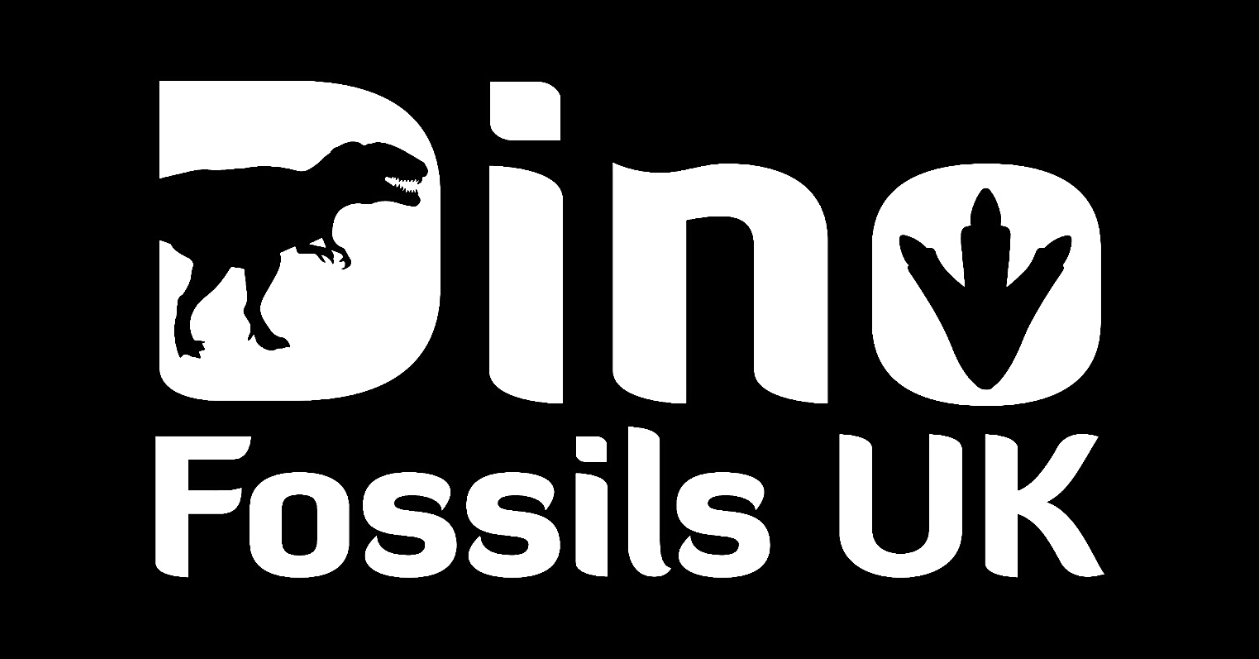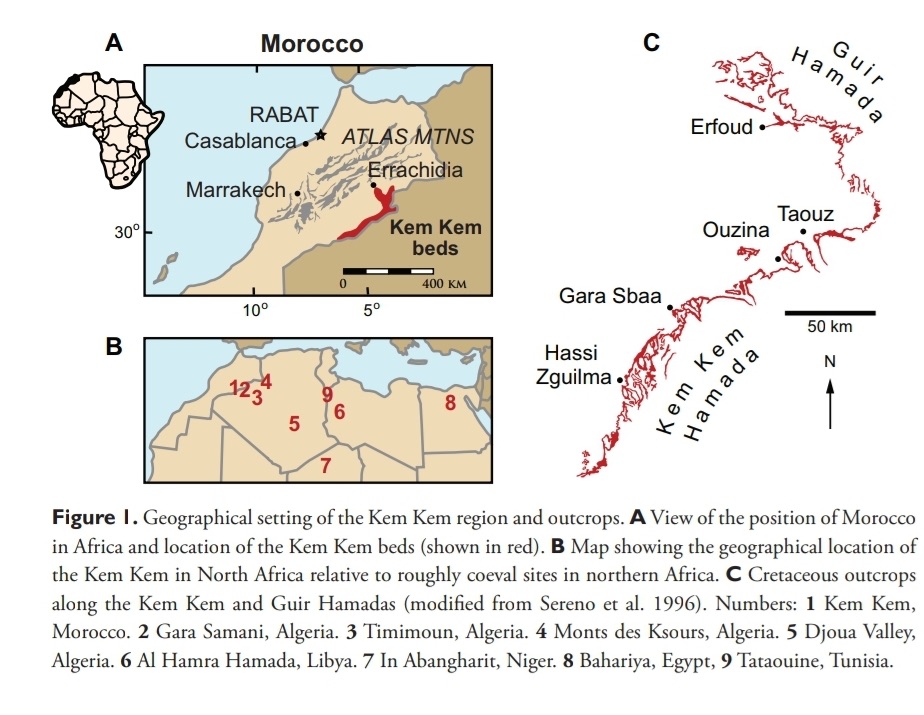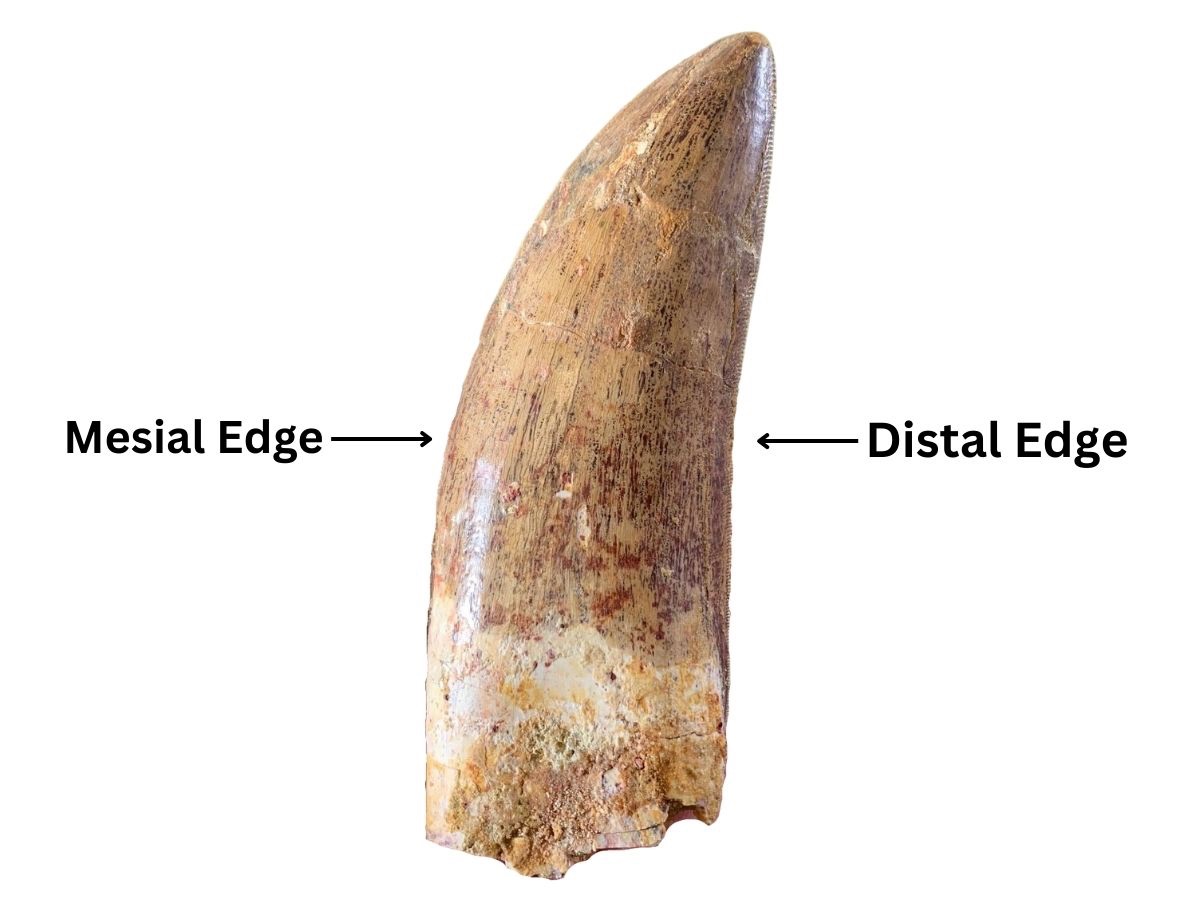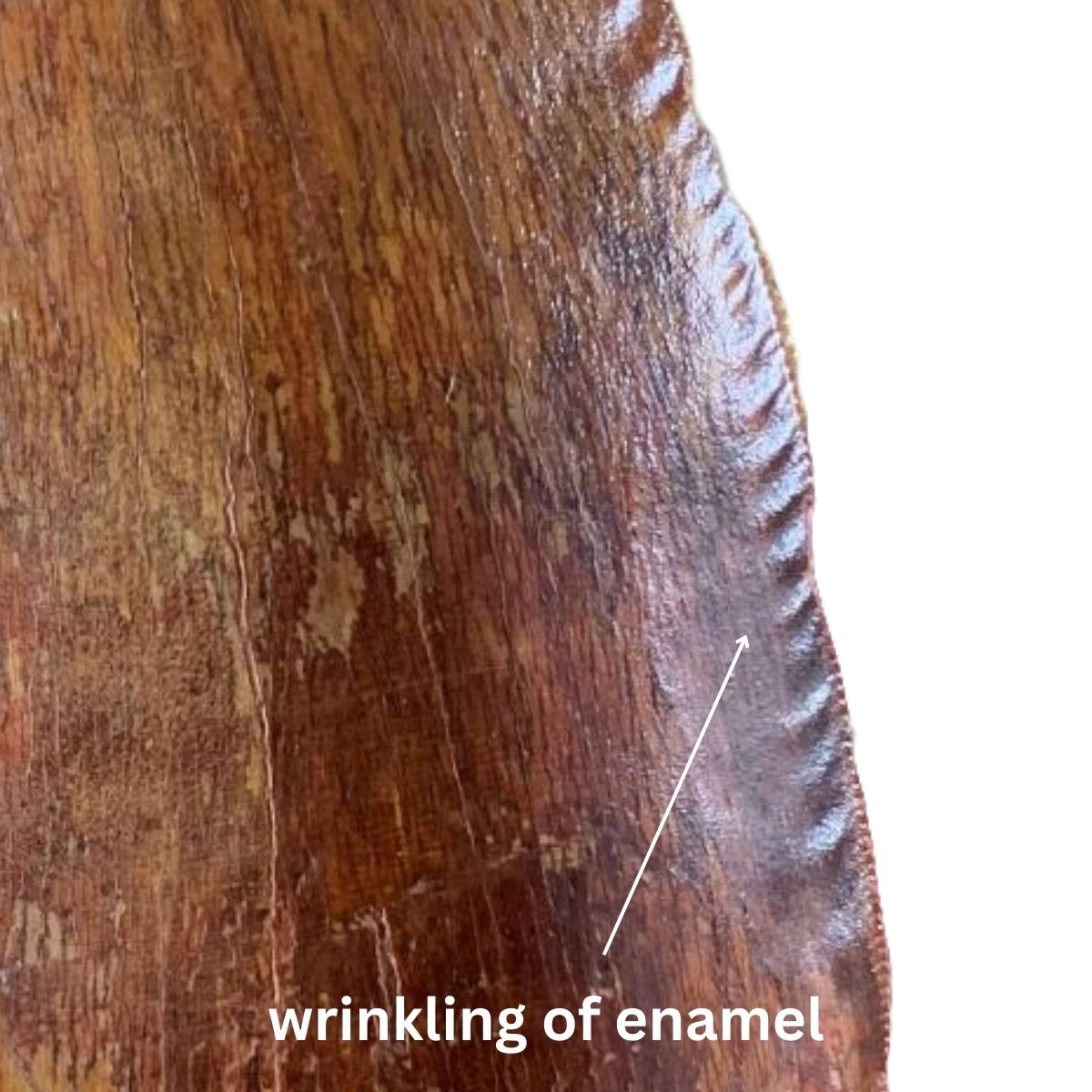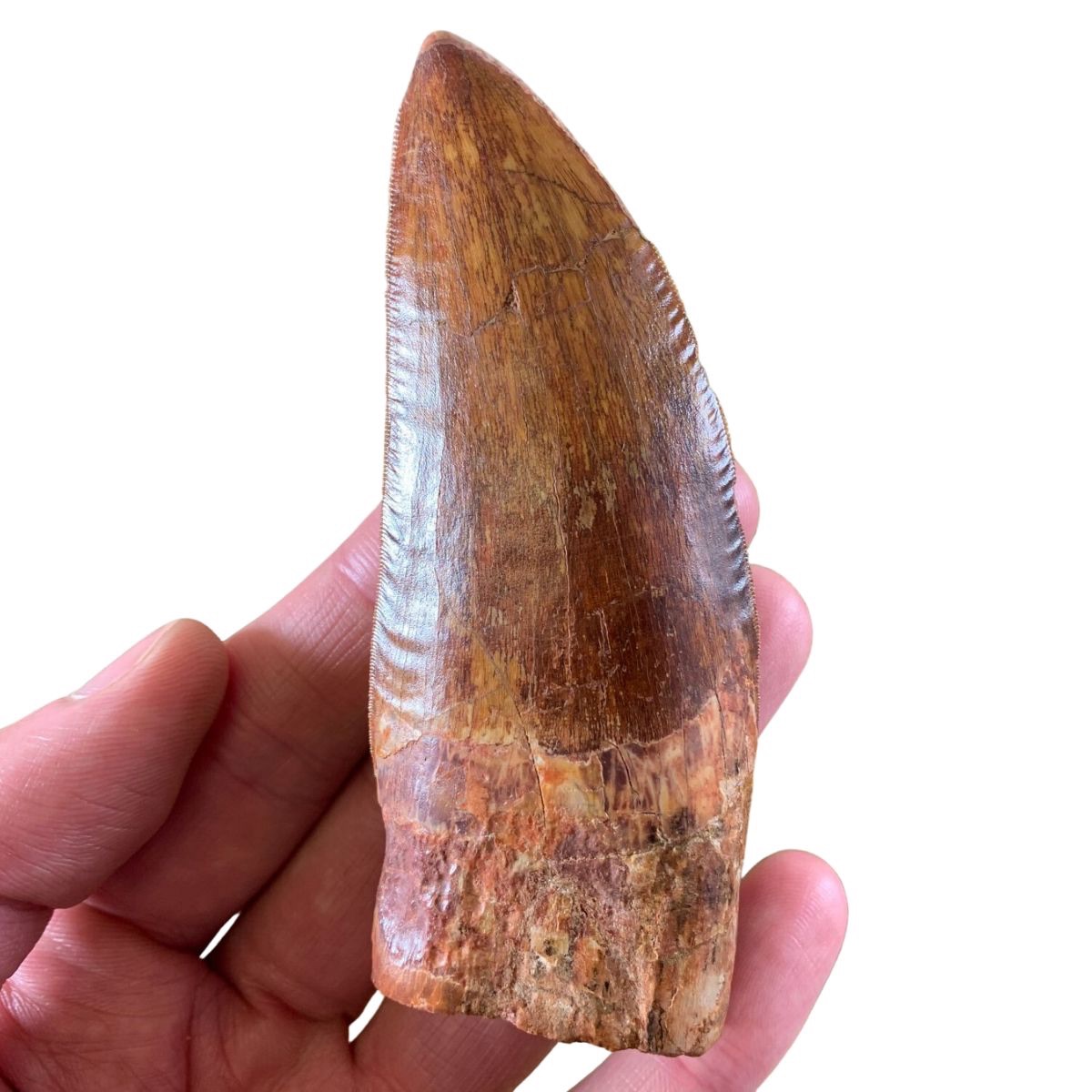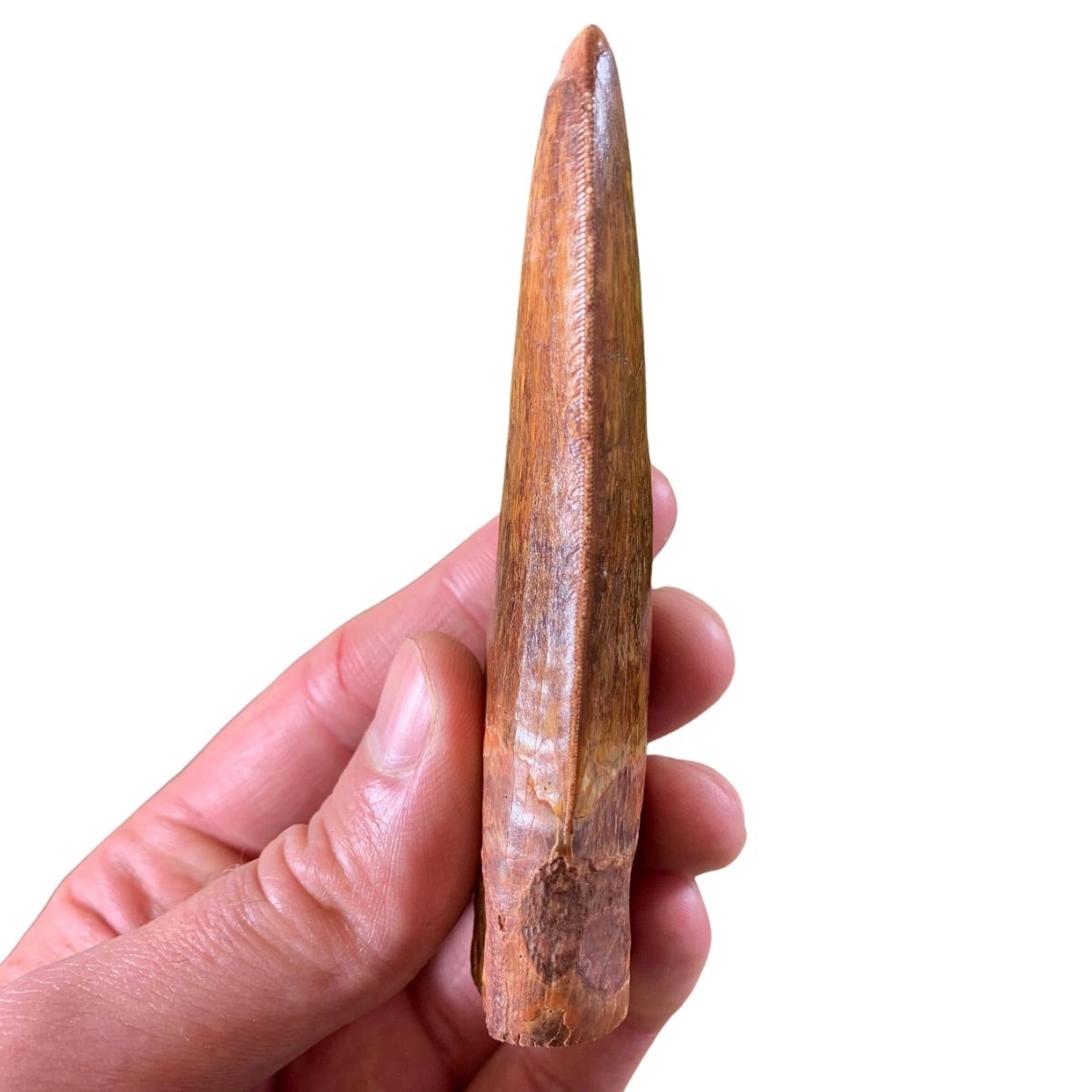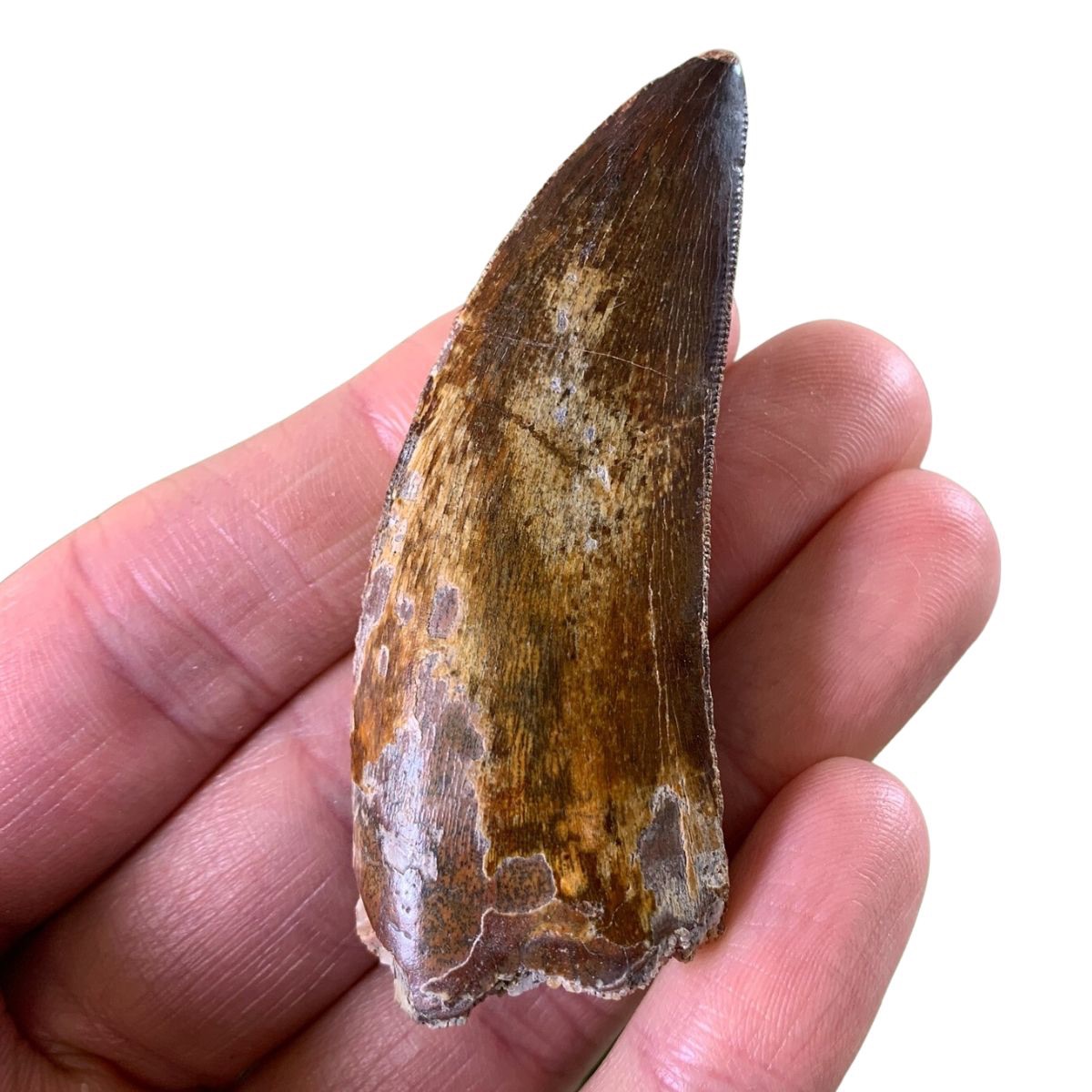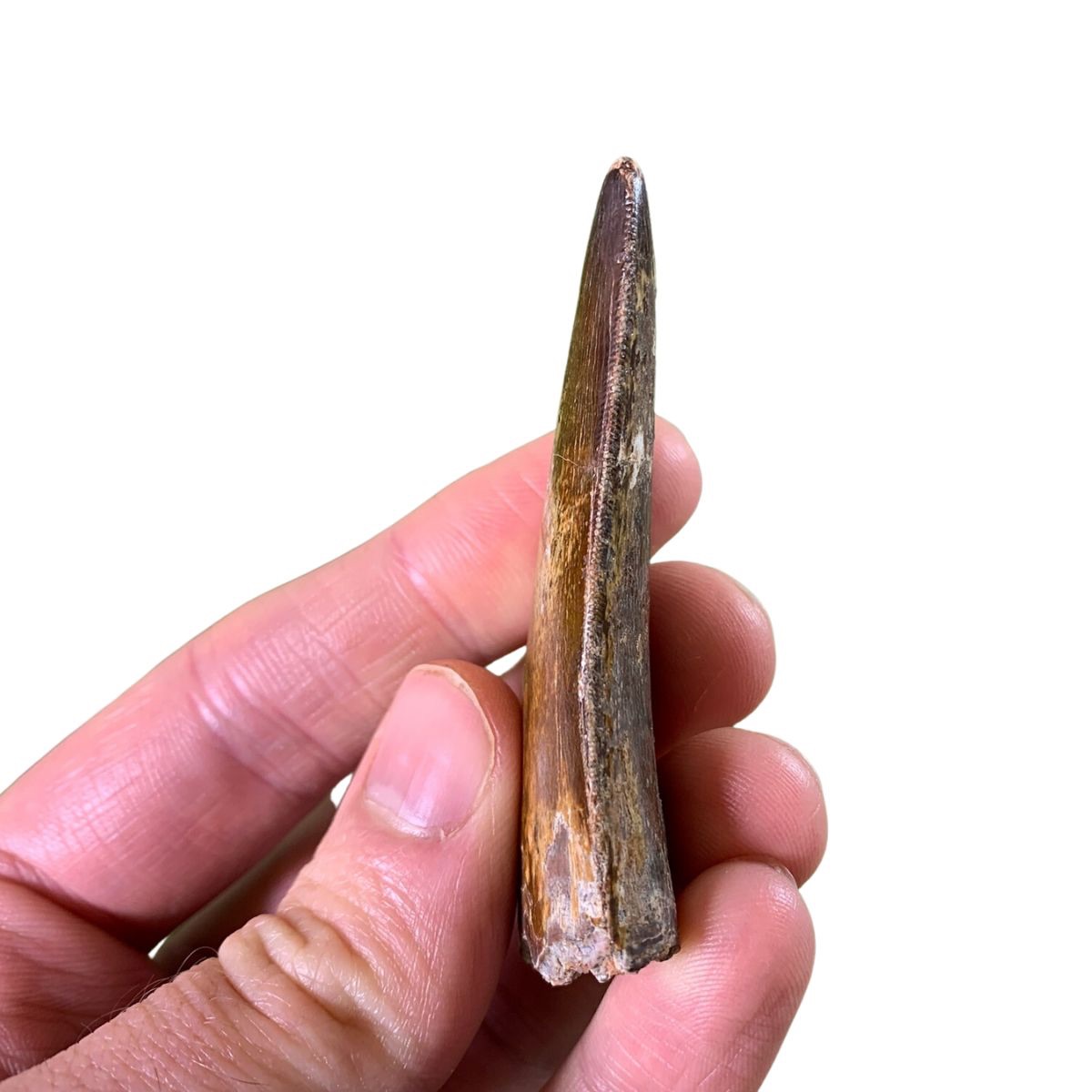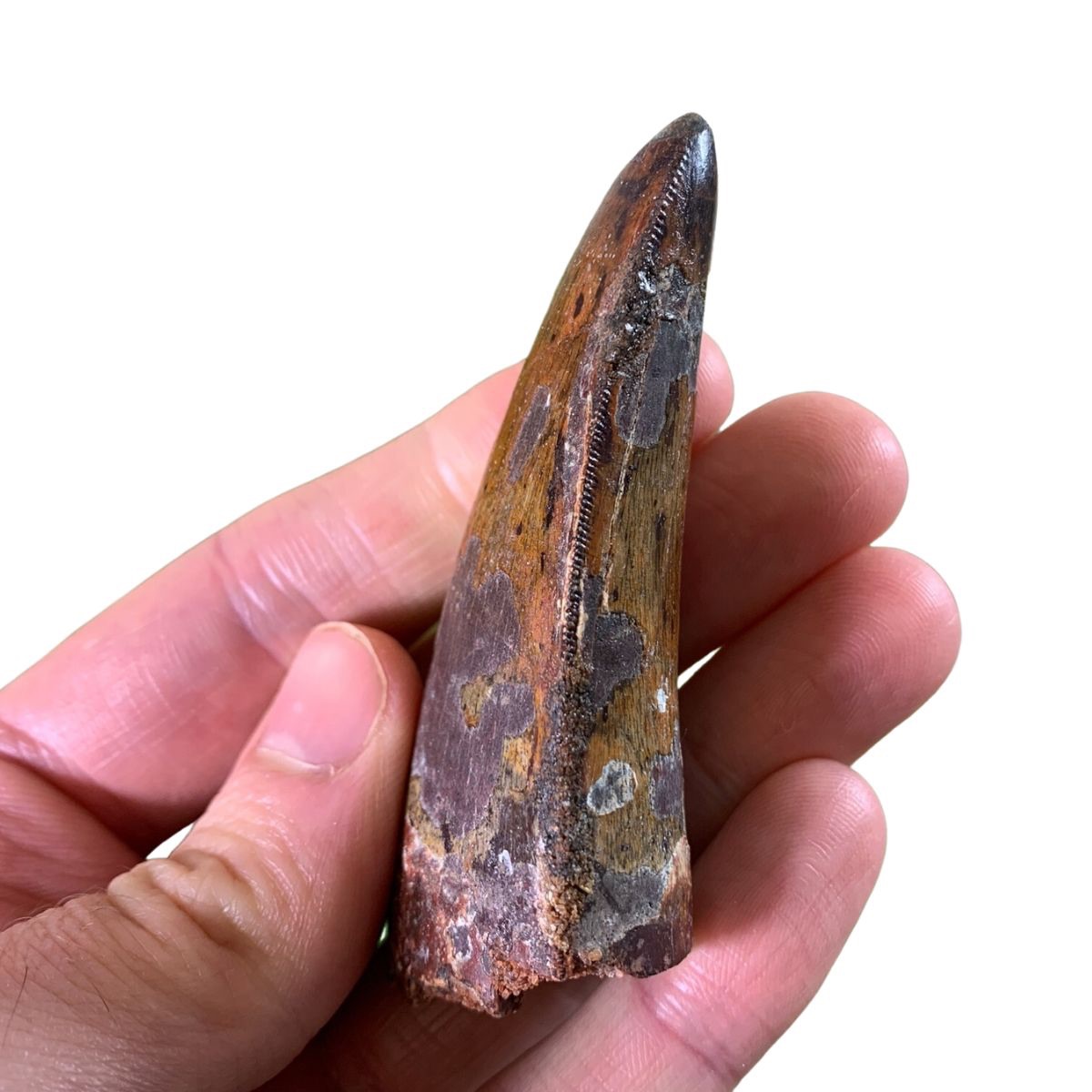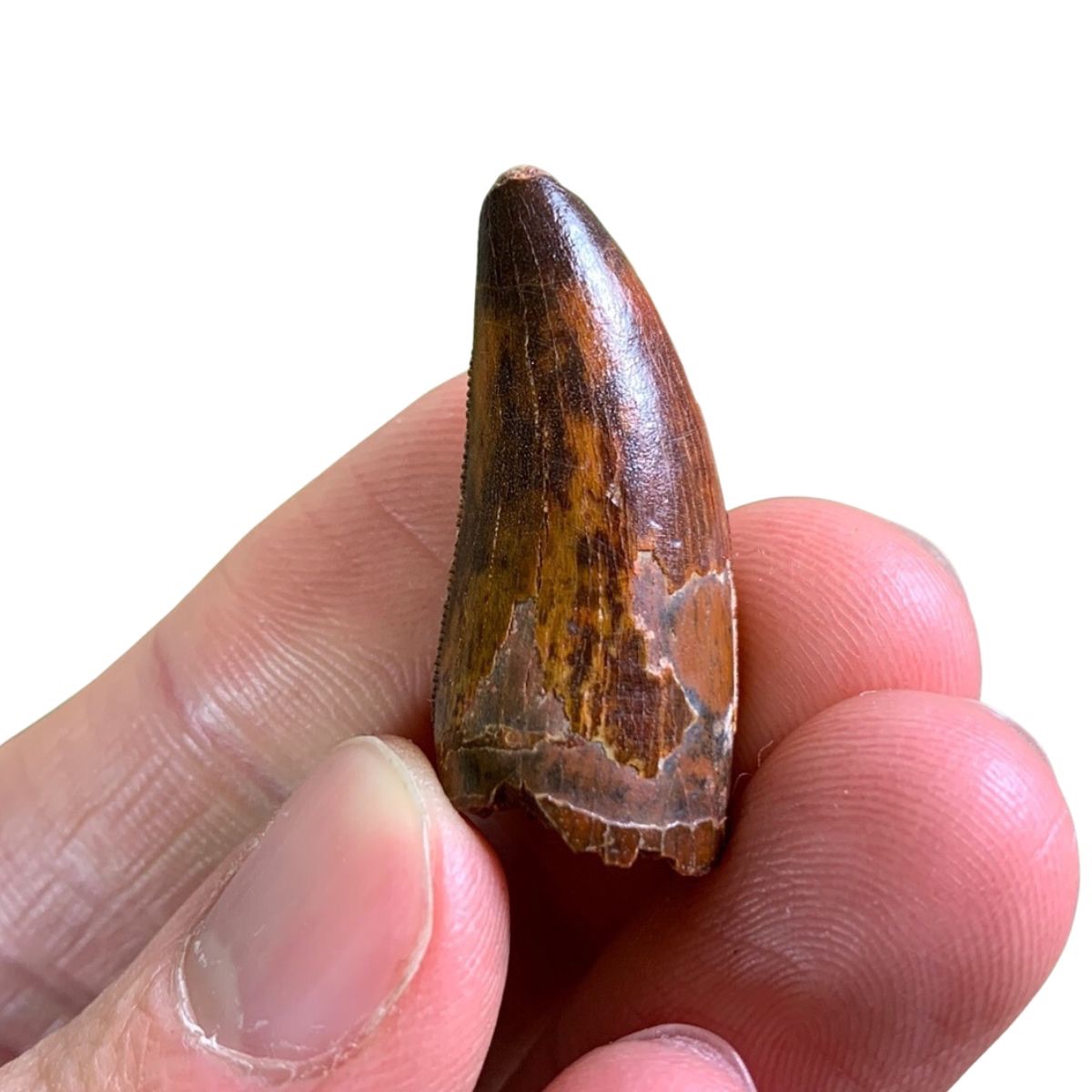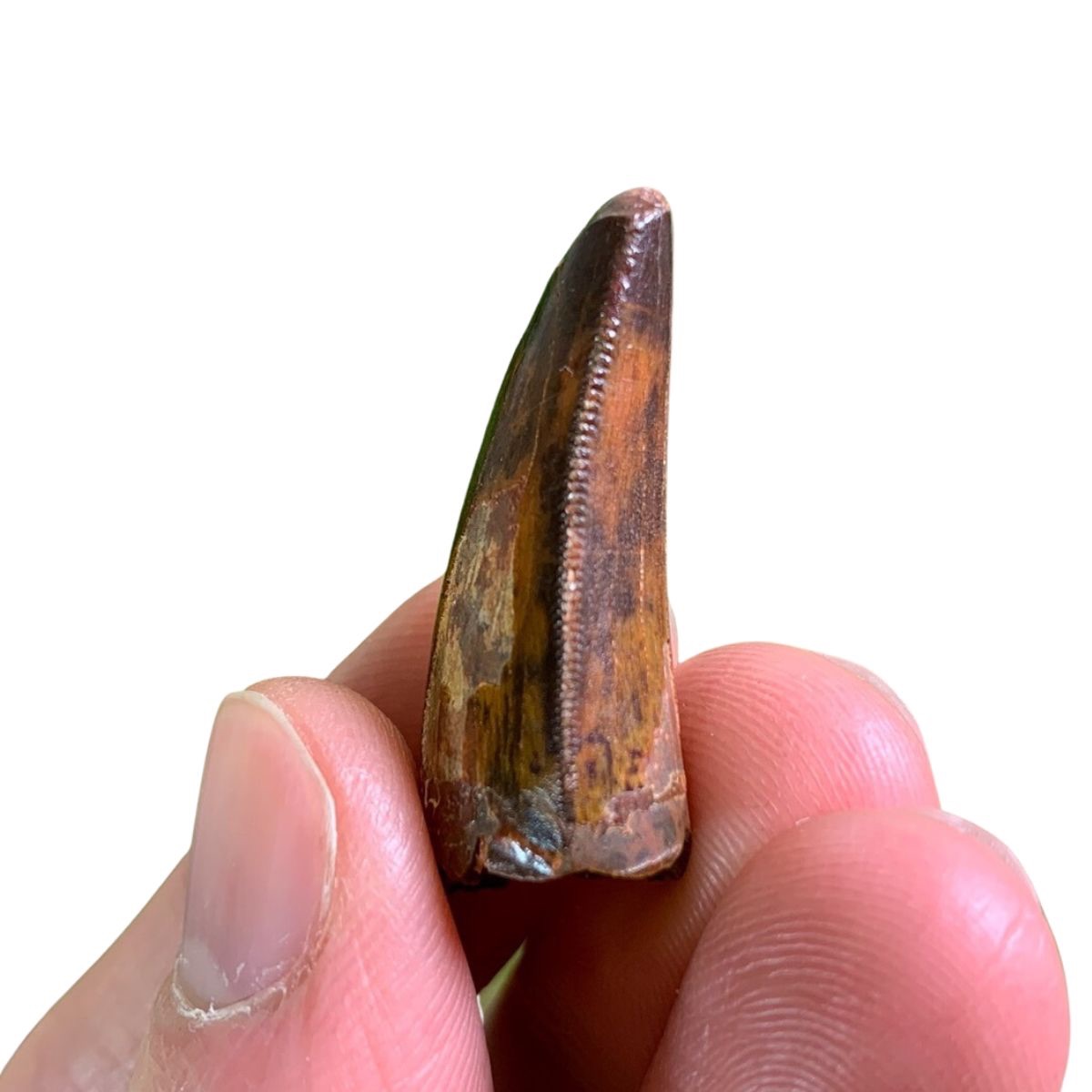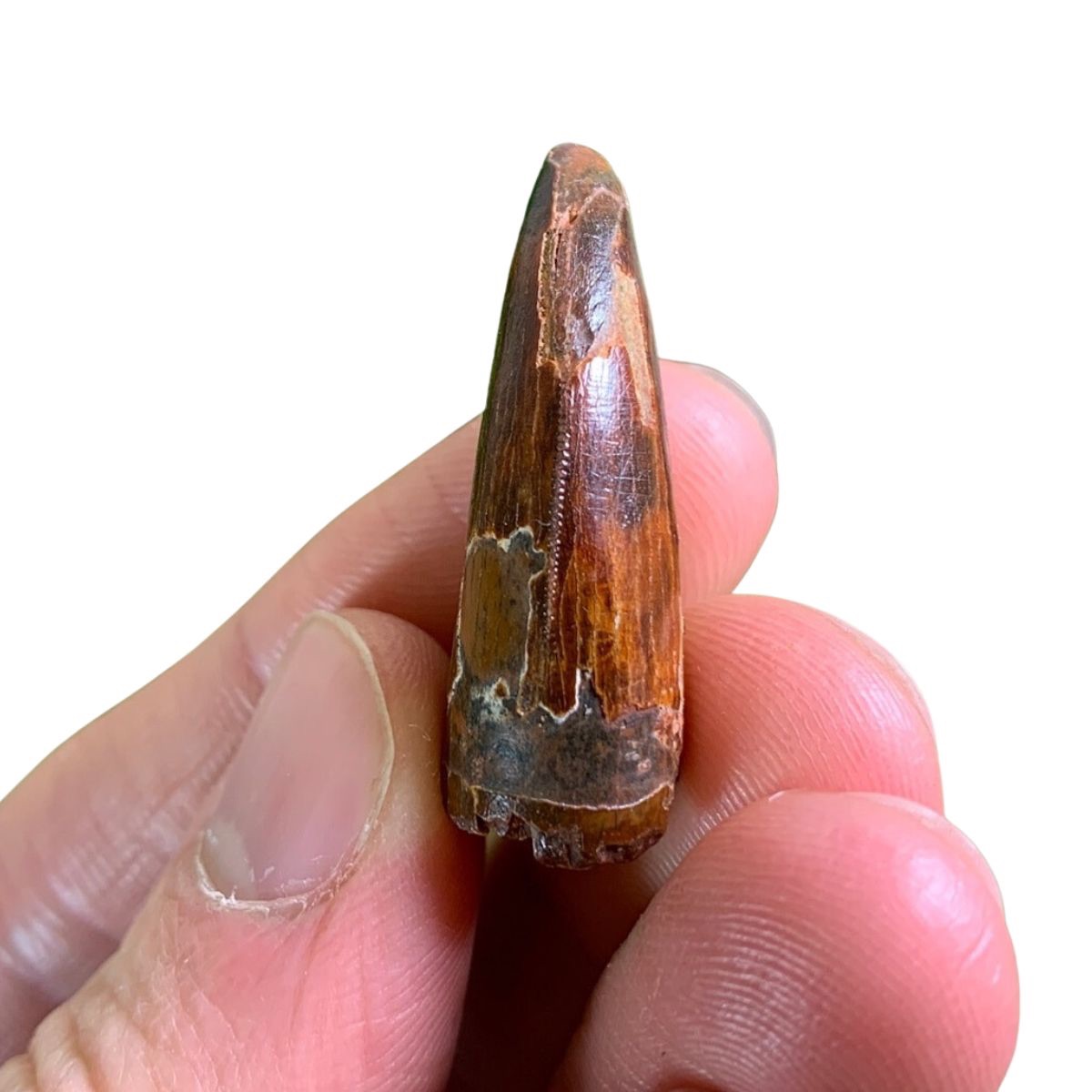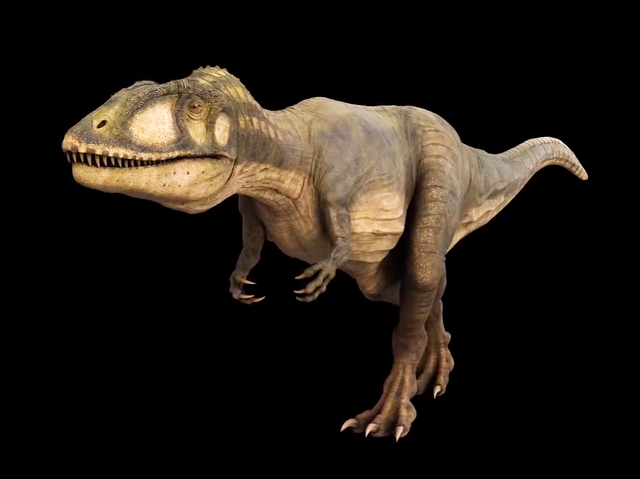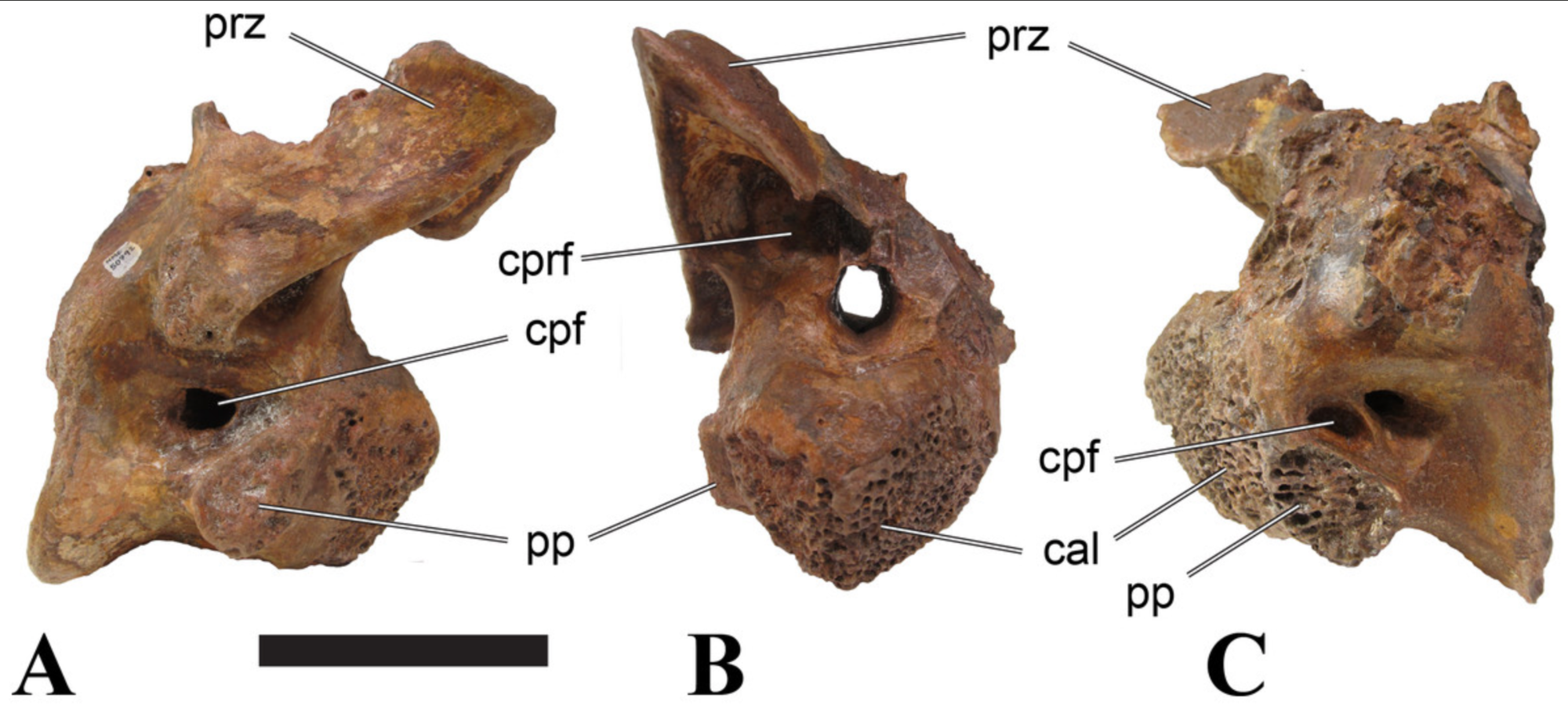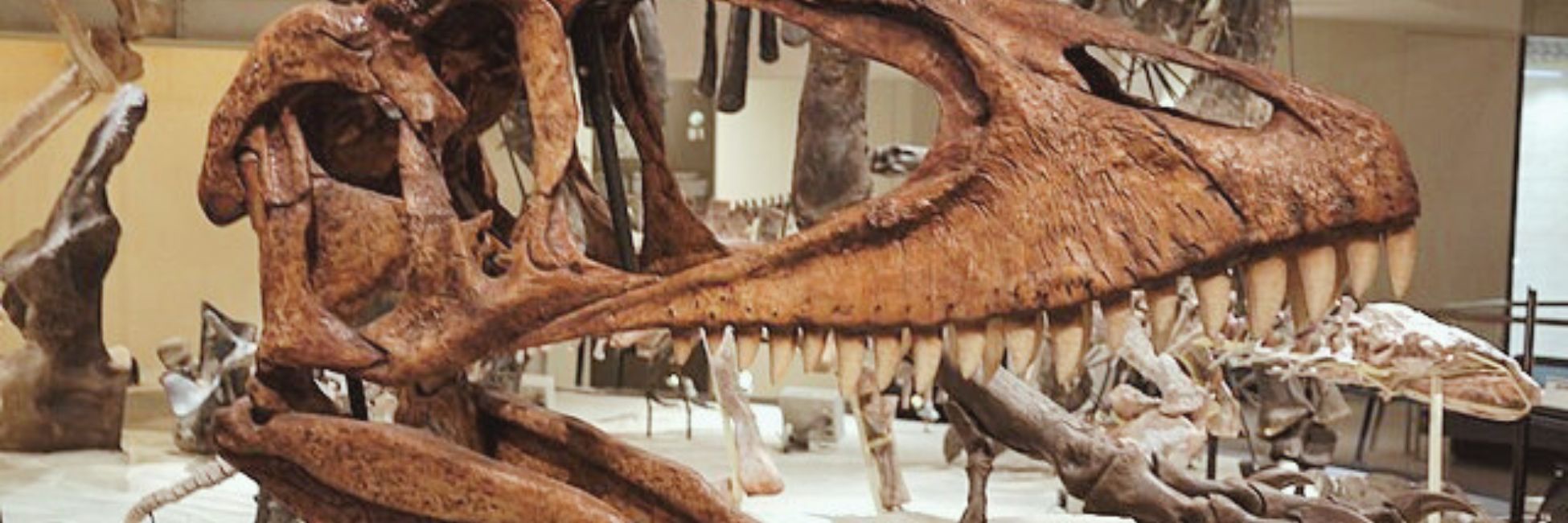
Carcharodontosaurus
A guide to identifying carcharodontosaurus FOSSILS from the kem kem beds of eastern Morocco
Carcharodontosaurus was a carniverous theropod dinosaur that lived during the mid-Cretaceous period, around 93.5 - 100 million years ago. It was one of the largest predators of its time and is estimated to have grown up to 12 meters in length, which is around the same size as a Tyrannosaurus rex. It had a narrow skull and large serrated teeth, which could measure up to 8 inches in length.
Carcharodontosaurus fossils have been discovered across North Africa, but for the purpose of this guide we are going to focus on those found in the Kem Kem Beds of eastern Morocco. The Kem Kem Beds are well known for their abundance of theropod dinosaur fossils. In 2012 a second type of Carcharodontosaurid, named Sauroniops, was described from these beds, however there is ongoing debate as to whether it is a valid genus or simply a junior synonym of Carcharodontosaurus. Teeth from both animals are indestinguishable, so some collectors may wish to describe these teeth as "Carcharodontosaurid indet." for the foreseeable future.
Charcharodontosaurus teeth
Carcharodontosaurus teeth will vary in shape to some degree, depending on it's position in the mouth. Lateral teeth (those from the sides of the mouth) are thinner and more blade-like, while anterior teeth (those toward the front of the mouth) are more robust.
For reference, the terms "mesial" refers to the front edge of the tooth and "distal" the back edge. See fig. 1.
lateral teeth
These teeth, positioned to the side of the mouth, were used for cutting and slicing flesh. Here are some of the key features:
- Serrated on both edges
- Sleek and blade-like
- Serrations will reach the base of the crown on both edges, possibly stopping slightly short on the mesial edge.
- Wrinkling of the enamel (see fig. 2).
- Usually a slightly higher serration density on the distal edge.
Anterior teeth
These teeth, positioned at the front of the mouth, were used for gripping and tearing prey. Here are some of the key features:
- Serrations on both edges.
- Fatter/more robust than lateral teeth.
- No wrinkling of enamel.
- Usually a slightly higher serration density on the mesial edge (opposite of lateral teeth).
African t. rex?
Carcharodontosaurus teeth are sometimes sold as "African T. rex Teeth". Both were large theropods and fascinating animals in their own right, but in reality these dinosaurs were not closely related. In fact their fossils are found on different continents and Tyrannosaurus rex lived around 30 million years AFTER Carcharodontosaurus.
Vertebrae
Unfortunately there is little published on Carcharodontosaurid vertebrae from the Kem Kem Beds. But be aware that dealers will sometimes misidentify Spinosaurid vertebrae as Carcharodontosaurid, this may be in part due to a paper published by Paul Sereno in 1996, that incorrectly attributed several Sigilmassasaurus (a spinosaurid) vertebrae to Carcharodontosaurus.
Below is a vertebra assigned to a Carcharodontosaurid by Serjoscha Evers.
